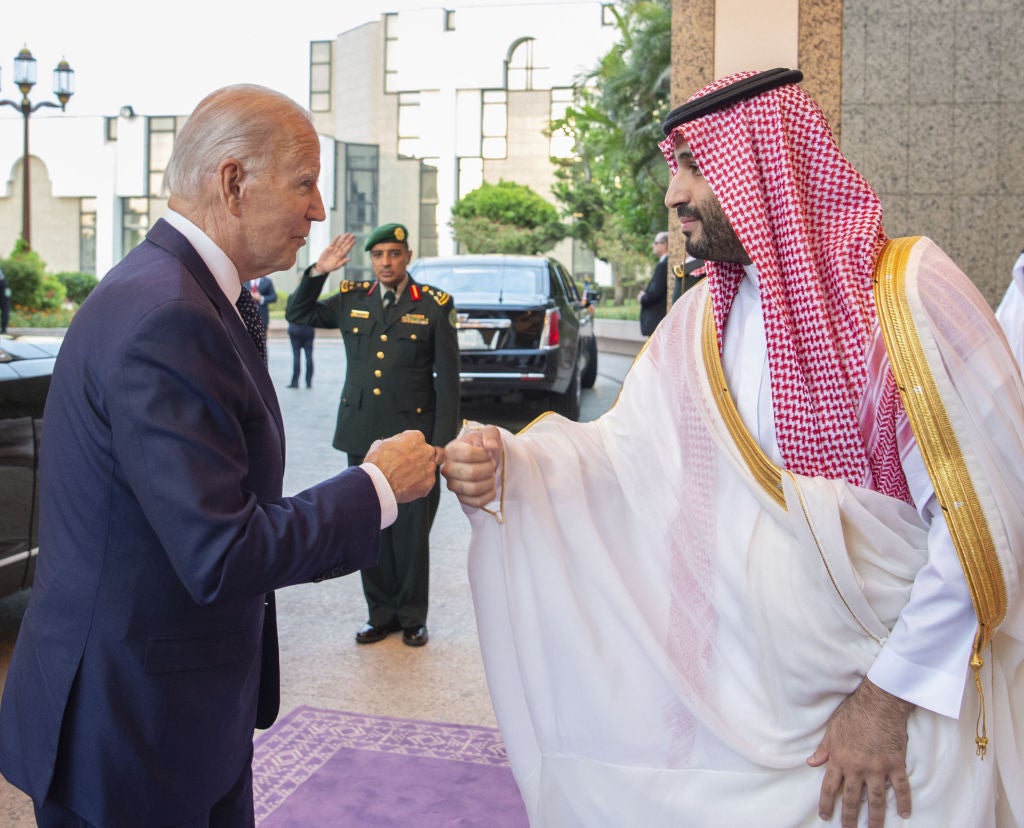
On Saturday (9 September), the US and EU signed an agreement with India, Saudi Arabia and the United Arab Emirates (UAE) to build a transnational trade corridor spanning railways and ports across Europe, the Middle East and India.
Described by President Biden as a “really big deal” that will lead to a “more stable, more prosperous and integrated Middle East”, the India-Middle East-Europe Corridor (IMEC) was announced during the G20 leaders’ summit in New Delhi.

Discover B2B Marketing That Performs
Combine business intelligence and editorial excellence to reach engaged professionals across 36 leading media platforms.
The idea is to build energy infrastructure and construct a new undersea cable to enhance telecommunications and data transfers. To speed up the transport of goods (particularly green hydrogen), the IMEC will connect Jordan, Israel, the UAE and Saudi Arabia by rail, leading on to Europe and India through regional shipping lanes and ports.
According to European Commission President Ursula von der Leyen, the railways will increase the speed of trade between India and Europe by 40%. Von der Leyen also insisted it is “much more than just a railway or a cable”, describing the IMEC as “a green and digital bridge across continents and civilisations”.
A cross-continent bridge of particular interest is Saudi-US diplomacy. After long-running tensions over oil, Biden and Saudi Crown Prince Mohamed bin Salman were full of praise for one another at the G20 Summit.
The Belt and Road shadow looms large
At the G20, Biden was quick to exploit the absences of Chinese President Xi Jinping and Russian President Putin to secure deals with key, energy-rich Middle Eastern states and counterbalance China’s soft power.
Beijing has invested massively in the region, with 23% of Chinese Belt and Road (BRI) investment in 2022 going to the Middle East. Through hundreds of billions of dollars spent developing infrastructure and transport lines across 148 countries, the BRI has been a key conduit of Chinese geopolitical influence.
While mentions of the BRI in transport companies have overarchingly decreased since 2018, European companies have consistently been among the most active in mentioning its activity, according to analysis by GlobalData.

North American transport companies may not refer to the BRI as frequently, but Washington has been particularly concerned about deepening Sino-Saudi relations.
The IMEC, in response, signifies a step up in US and European influence across the Middle East as an alternative investor for G20 members.
GlobalData senior analyst Amelia Connor-Afflick said: “There has been significant backlash by developing countries over debt concerns from the BRI.
“An AidData study looked at 13,427 China-backed initiatives and found that a larger proportion has been suspended or cancelled since BRI’s 2013 launch, with evidence of ‘buyer’s remorse’ in countries such as Kazakhstan, Costa Rica and Cameroon.
“Exposure to Chinese debt also now exceeds 10% of gross domestic product in many low and middle-income countries. “This has led to doubt over the BRI’s capacity to help with long-term development. The IMEC could therefore become a welcome alternative for emerging economies.”
While the IMEC stole the headlines at the G20, the EU and USA also jointly announced the Trans-African Corridor. This second project connects the Democratic Republic of Congo (DRC), Zambia’s so-called ‘Copper Belt’ and Angola’s Lobito port via a greenfield rail line.
Growing global demand for copper amid the green energy transition is expected to increase China and the US focus on resource-rich, sub-Saharan African nations such as the DRC and Zambia, which collectively account for over 10% of global copper production.
Leaders from the participating nations did not say who would be paying for either project in press conferences or the IMEC’s MoU. A working group will release more detailed plans, including a timeline, over the next 60 days.
Our signals coverage is powered by GlobalData’s Thematic Engine, which tags millions of data items across six alternative datasets — patents, jobs, deals, company filings, social media mentions and news — to themes, sectors and companies. These signals enhance our predictive capabilities, helping us to identify the most disruptive threats across each of the sectors we cover and the companies best placed to succeed.




